
The title of this post would suggest that we compost in the winter. Which would only be half true. In fact, once the ground freezes sometime in November, I usually put the composting on hold until spring.
But with an unseasonably mild winter this year, I have been tending a bit to our compost. Moreover, I started juicing (veggies, not steroids) in January (thanks for the inspiration, Annie M. and Annie P.- and this warrants a whole separate post) and have so much good veggie and fruit pulp to add to the compost. I can’t bear to throw it into the trash for fear that the Waste Gods will strike me down with an eco-friendly sustainable energy-efficient lightening bolt.
Besides, I have been yearning for spring. And with spring comes planting. And plants need good compost! So… let’s prepare just the slightest bit, shall we?
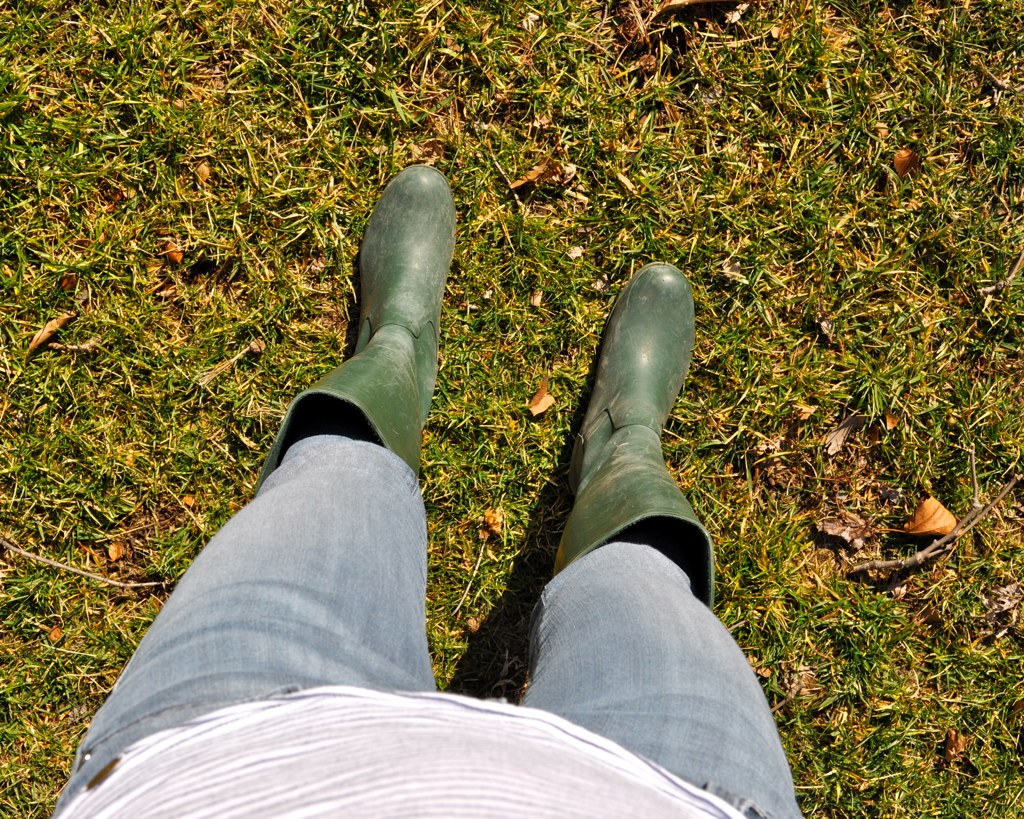
Equipment needed: muck boots (I love Hunter rain boots, but couldn’t justify spending the money. Plus, these were on sale- and cute too!) and a shovel (a wheelbarrow wouldn’t hurt either, but it’s certainly not necessary).
Trust me, this is easy.
Step 1: Find a pile of dirt. We had some left over from when we planted a whole bunch of shrubs last fall. The dirt can be crappy (i.e. not nutrient-rich, full of clay, etc.) You will be adding to it, and the worms will do all the work from there.
Step 2: Get some leaf mulch. Look up your community’s parks and recreation website and they should have some place you can pick up free leaf mulch. USE IT! We get all of our mulch for free this way. You just have to go pick it up yourself. Use leaf mulch and not wood mulch, as the former adds tons of nutrients to your garden. Plus, earthworms love to eat leaves, so that’s how you get your wormy helpers to come visit your compost pile.
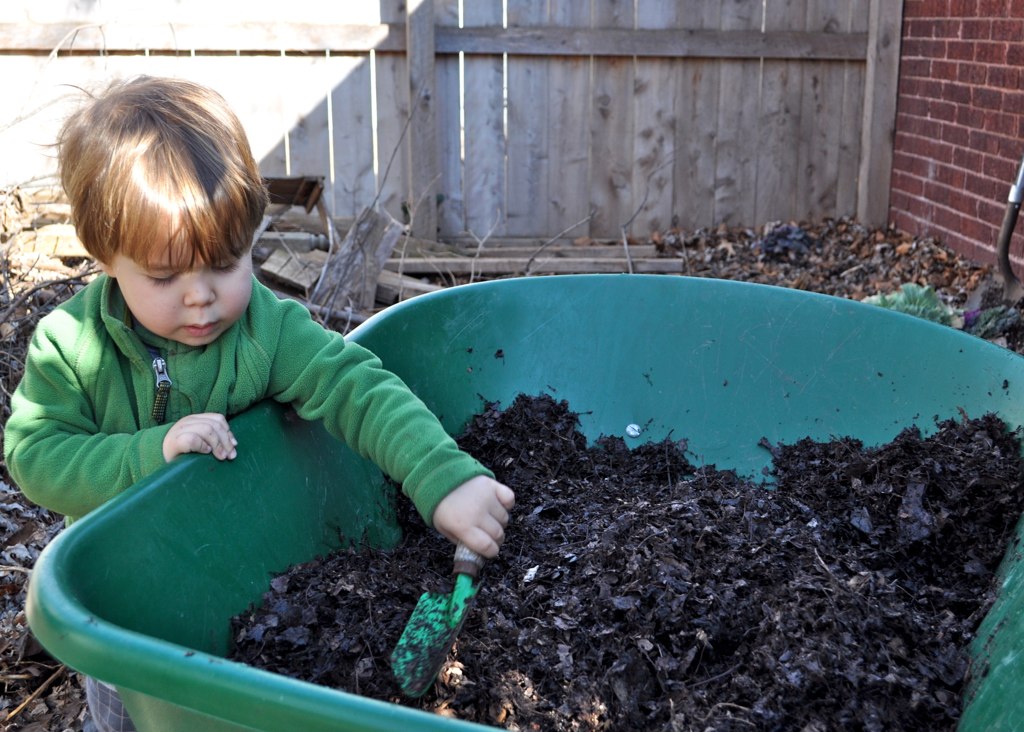
The greatest part is, the above leaves have been recycled! In the fall, the city comes to collect all the leaves we raked into the street. They then shred them and pile them up for anyone to come take… circle of life, people.
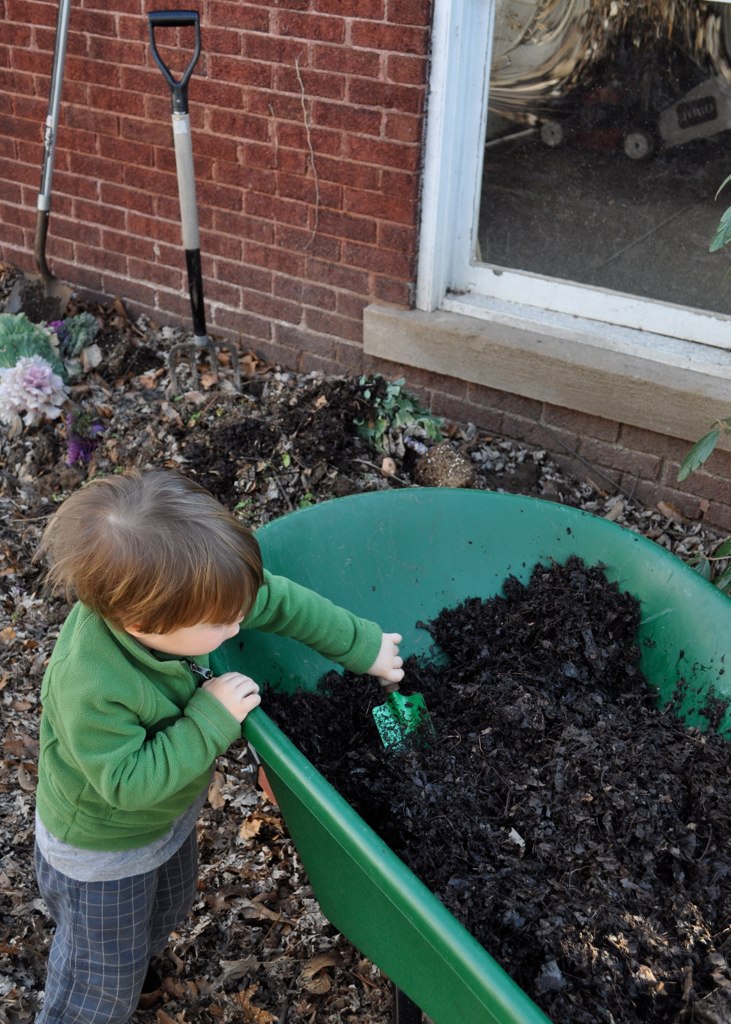
Step 3: Alternate layers of leaf mulch and dirt, plus whatever else you have lying around in the way of compost additives (kitchen scraps- including eggshells, coffee grounds, and veggie peels, excluding any other animal byproduct and anything citrus- see more here). As you layer, make sure you chop up any big things you add, like last Halloween’s jack-o-lanterns or decorative kale plants, or dead plants from last summer’s garden. Just give it all a good beating with your shovel. It’s really therapeutic, actually. The more you chop it up, the faster it will decompose.
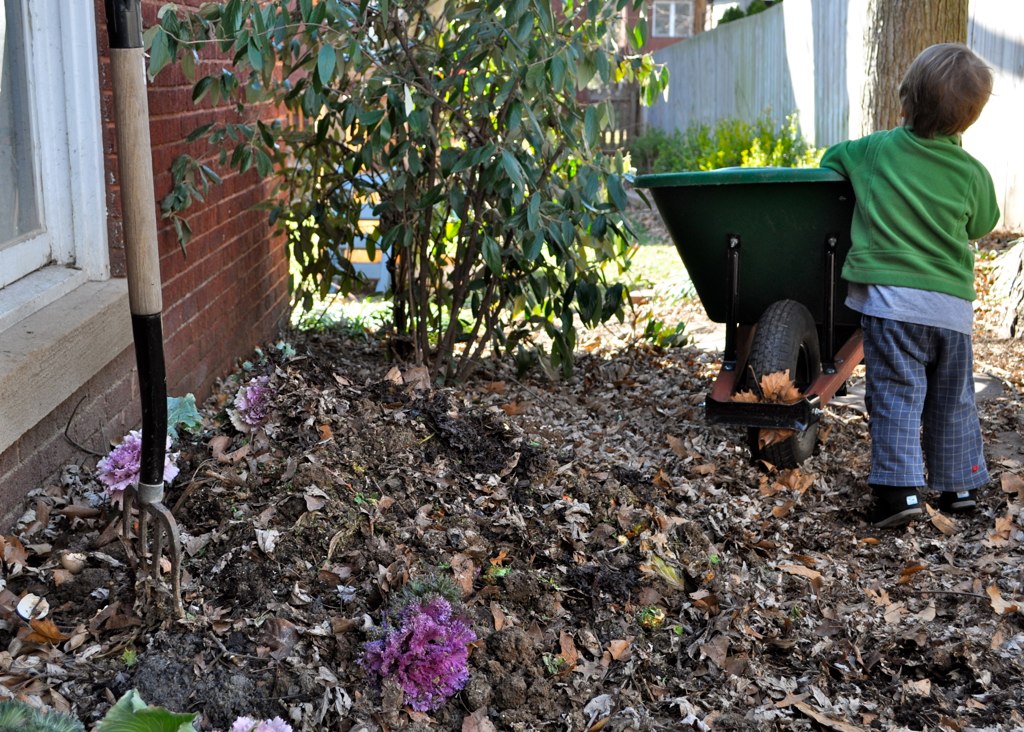
Keep piling and layering. A nice big pile will keep the inside warm and toasty as the stuff inside decomposes, speeding up the process. Of course, the colder your weather, the longer it will take to turn into compost. We usually keep the kitchen scraps to a minimum until it warms up a bit more. Now, you wait.
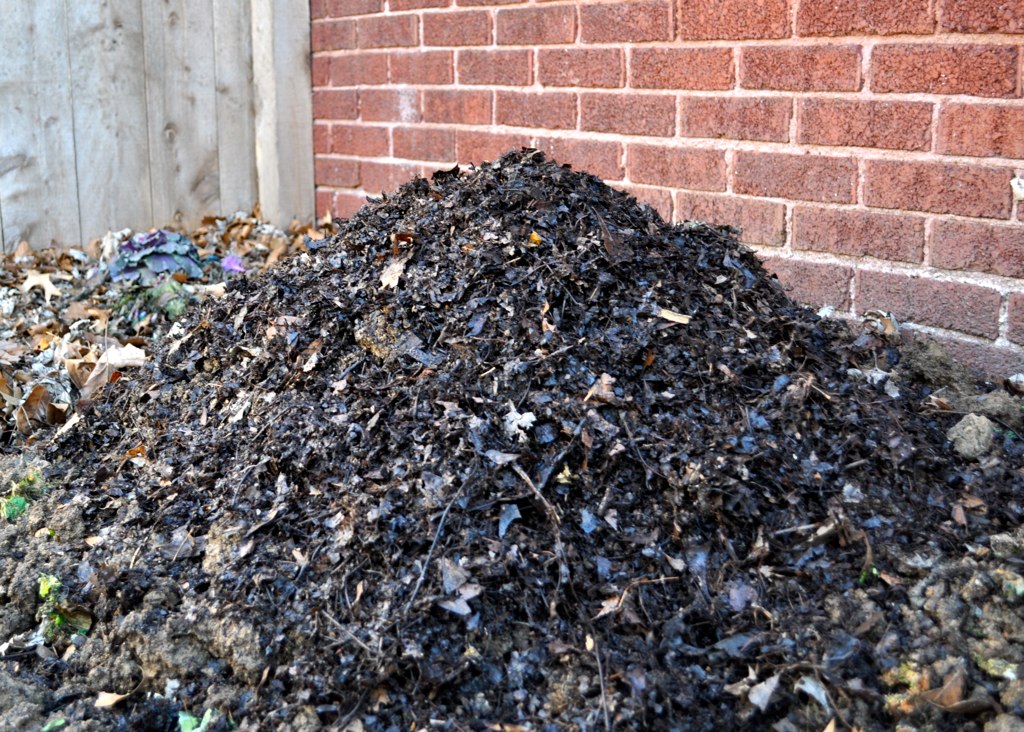
And if you are really ambitious, you can get a couple piles going at once. On warm(er) days, just take a minute to head out to your pile (or piles) and turn it a few times with a shovel or pitchfork. Come spring, you should have some nice soil ready for the veggie garden!

Yay composting! I have two piles going at once- I was out there in my boots this weekend! The warm weather has been great for this. In the summer we get so many worms that find there way in there I could run a worm farm.
Glad you are juicing- Oren is obsessed with kale juice (of course, with lots of fruit!)
P.S. Yay you for getting that Madewell dress- I love being Pinterest buddies!
Compostis the best- love this post! Your weather looks even warmer than our’s has been so you’ve got a leg up… I’m also too lazy to deal in the winter which I’m now having a bit of guilt about. Love your little helper!
City apartments suck, so I’m doing my gardening vicariously through your blog. Love the gardening posts!
What a great post!!!! We just started composting this year and it has been quite an adventure. Love reading about other families doing things green!!
we just got our seeds in the mail. it has begun! happy gardening, preparing, etc.!
Awesome! Husband’s started abandoning the pile in favor of just throwing scraps in the yard and garden. Yeah, our neighbors LOVE us.
On another note, I’ve found that if you just rake your leaves off the grass and into beds or garden in the late autumn, they pack down really tightly in thick sheets over the winter. In the spring, it makes a great barrier for weed sprouts. Of course, if you’re a more attentive composter (not using our throw-it-round-the-yard method) you might need them for layers.
Thanks for the shout out, Lauren!! I love the “Moreover, I started juicing (veggies, not steroids) ” lol I have to admit that I am without a juicer right now and am hesitant to buy one at the fear that I won’t use it often enough/want to clean it too often.. but by far, I think it is without a doubt one of the best healthy things a human can do! Lately my splurge has been foot massages – another one of the top healthy habits/splurges for sure 🙂 Have you ever got into massaging the kids?